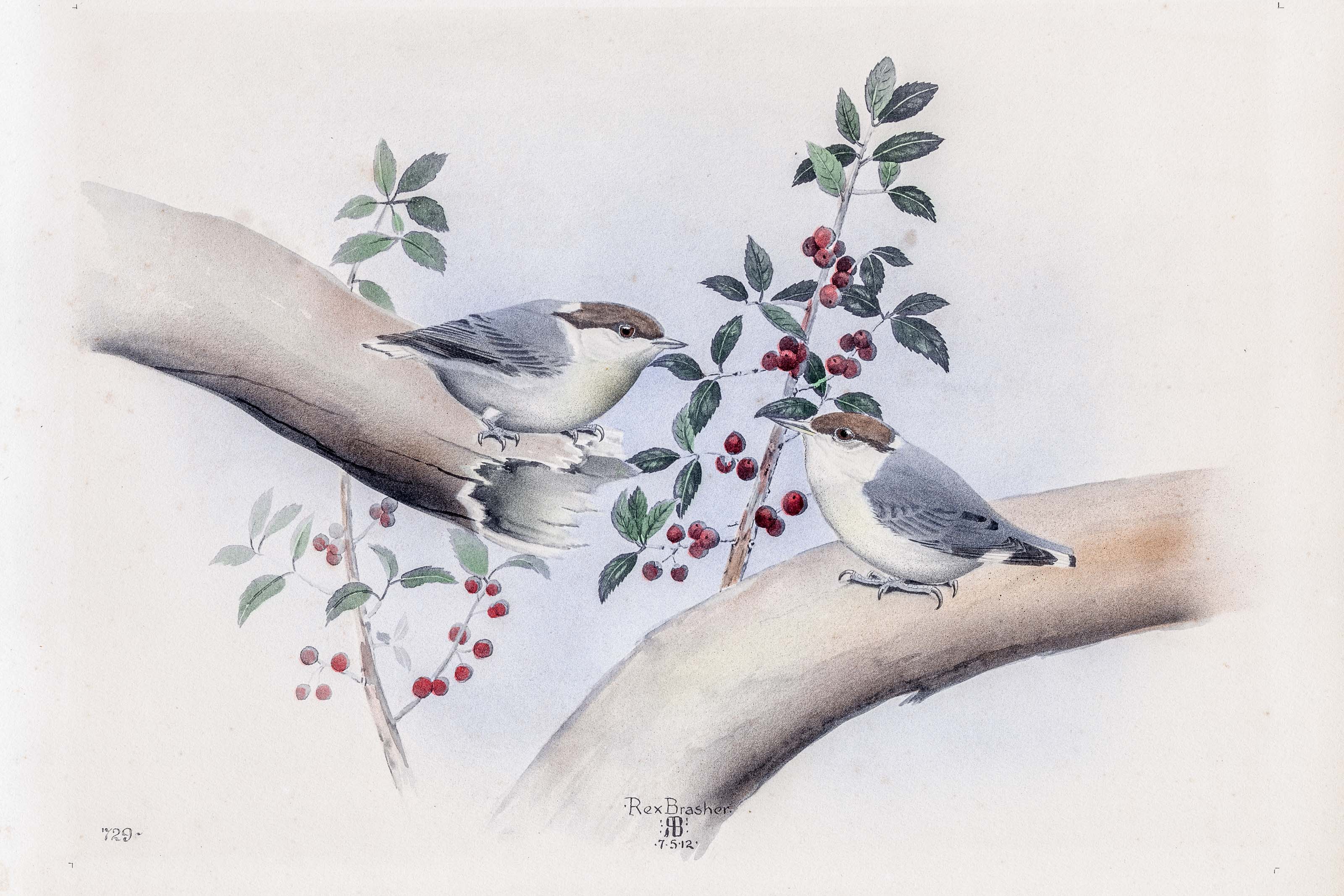
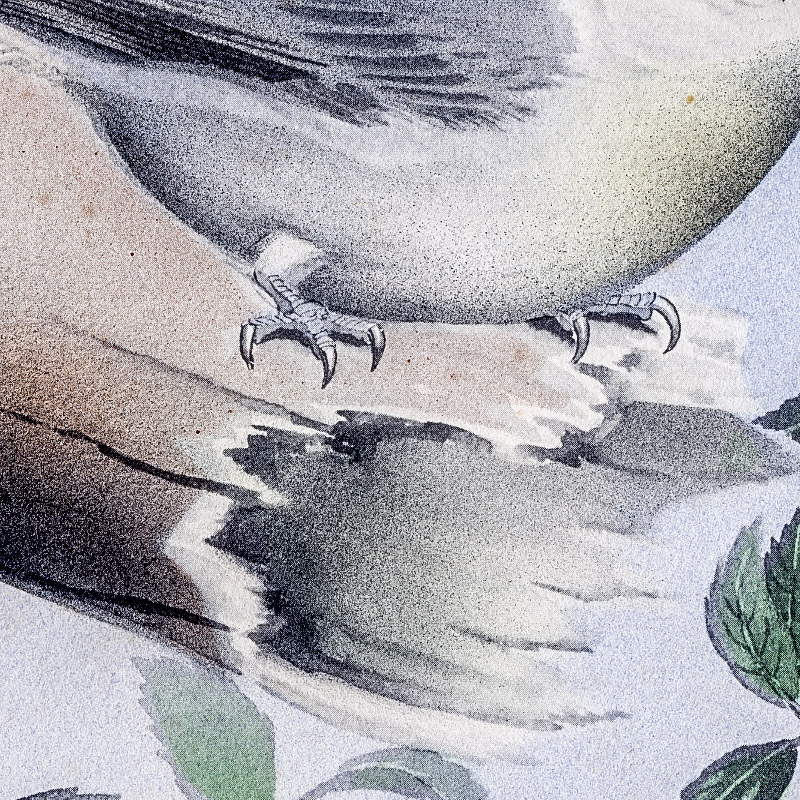
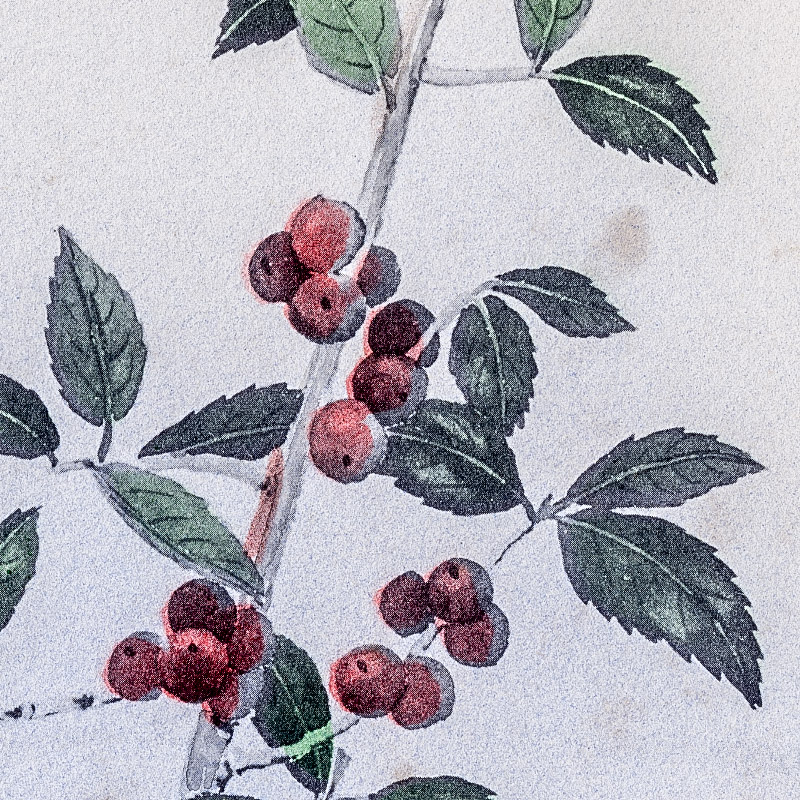
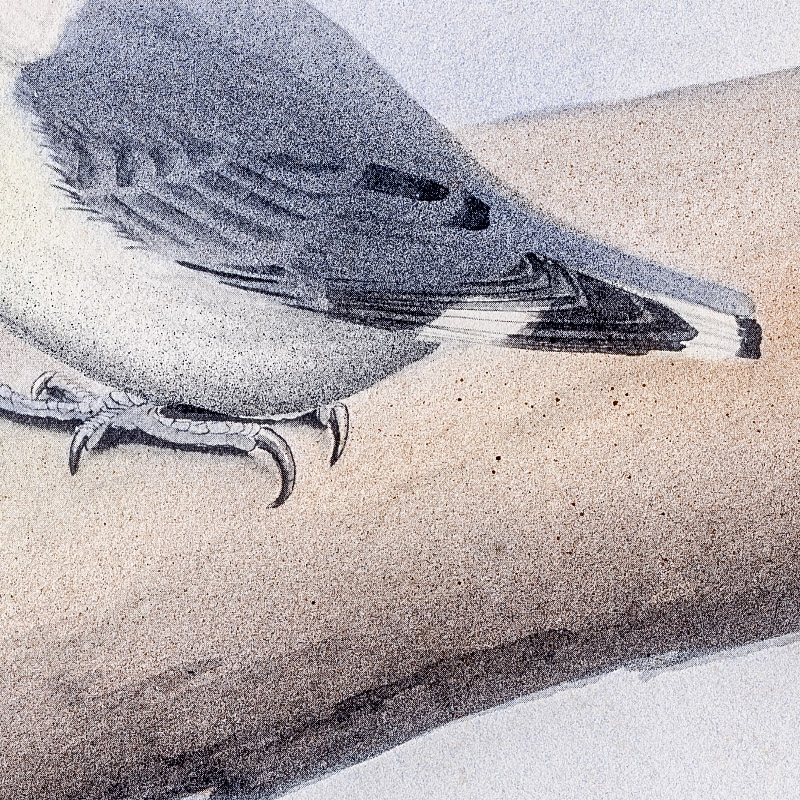
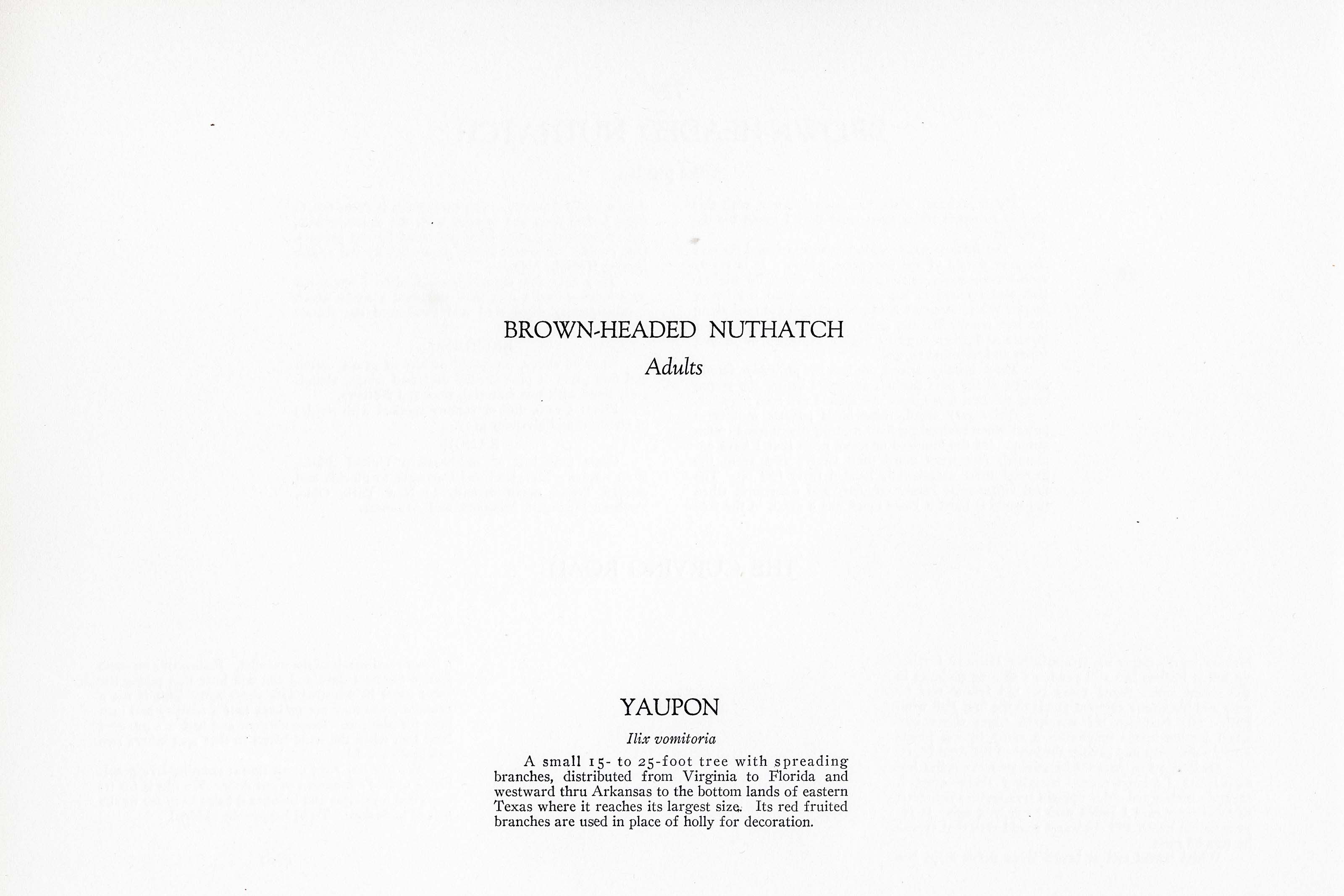
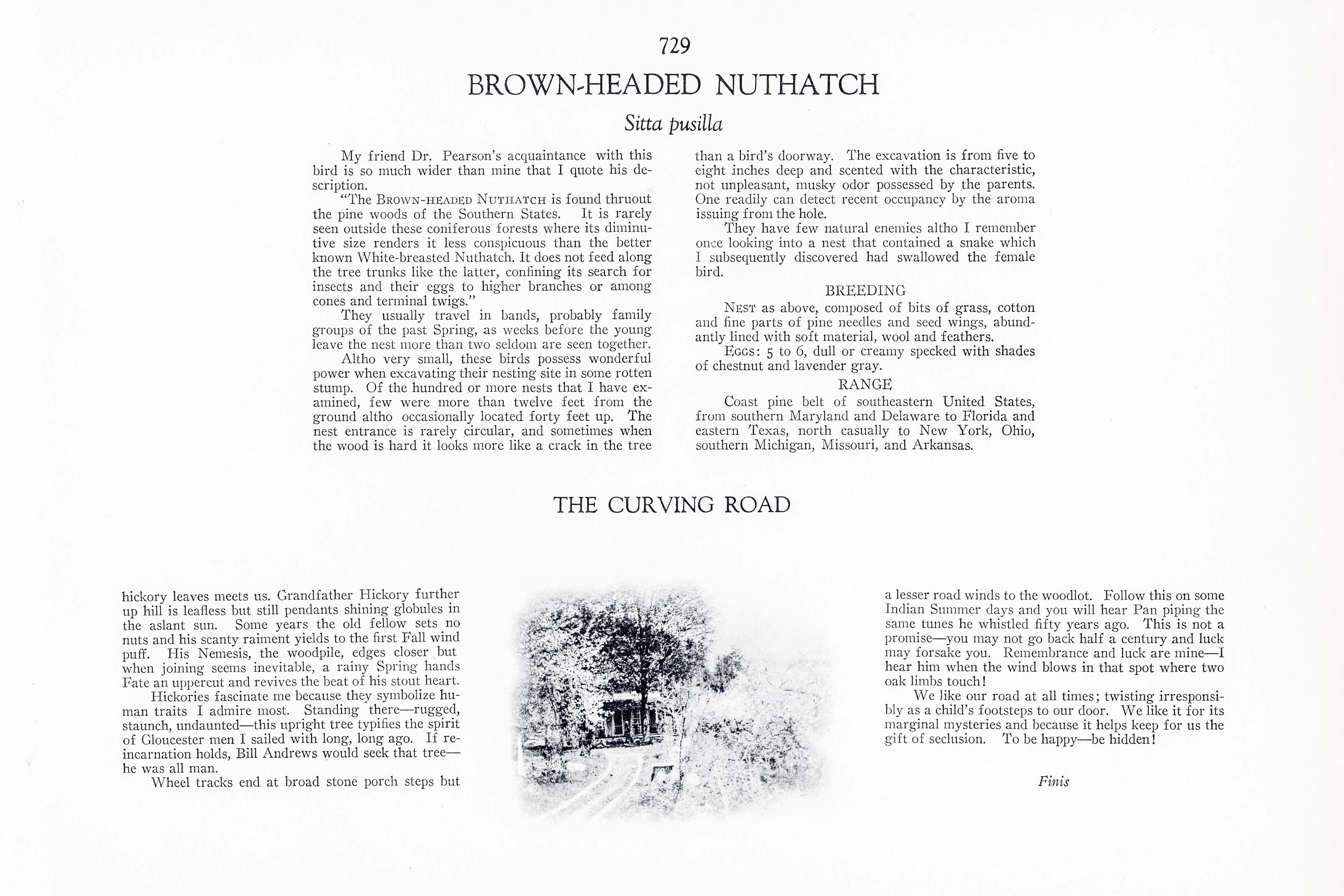

1912
1929
12
729
A team of dedicated board members, volunteers, and student interns has published every page in Volume 9. This volume includes 360 images of paintings and lyrical descriptions of birds, now available online for everyone to enjoy anywhere in the world. This is a monumental task. Each volume requires approximately 400 hours to photograph, edit, transcribe, catalog, and publish online. We need your support to complete this work.
If you're tech-savvy, have a good eye, are meticulous with details, and love structured data, please consider volunteering by emailing us at hello@rexbrasher.org.
We encourage all bird lovers and supporters to consider a monetary donation to support our mission to make Rex's work available for everyone. You can provide a one-time or recurring donation online.
My friend Dr. Pearson's acquaintance with this bird is so much wider than mine that I quote his description.
"The BROWN-HEADED NUTHATCH is found thruout the pine woods of the Southern States. It is rarely seen outside these coniferous forests where its diminutive size renders it less conspicuous than the better known White-breasted Nuthatch. It does not feed along the tree trunks like the latter, confining its search for insects and their eggs to higher branches or among cones and terminal twigs."
They usually travel in bands, probably family groups of the past Spring, as weeks before the young leave the nest more than two seldom are seen together.
Altho very small, these birds possess wonderful power when excavating their nesting site in some rotten stump. Of the hundred or more nests that I have examined, few were more than twelve feet from the ground altho occasionally located forty feet up. The nest entrance is rarely circular, and sometimes when the wood is hard it looks more like a crack in the tree than a bird's doorway. The excavation is from five to eight inches deep and scented with the characteristic, not unpleasant, musky odor possessed by the parents. One readily can detect recent occupancy by the aroma issuing from the hole.
They have few natural enemies altho I remember once looking into a nest that contained a snake which
I subsequently discovered had swallowed the female bird.
NEST as above, composed of bits of grass, cotton and fine parts of pine needles and seed wings, abundantly lined with soft material, wool and feathers.
EGGS: 5 to 6, dull or creamy specked with shades of chestnut and lavender gray.
Coast pine belt of southeastern United States, from southern Maryland and Delaware to Florida and eastern Texas, north casually to New York, Ohio, southern Michigan, Missouri, and Arkansas.
A small 15- to 25-foot tree with spreading branches, distributed from Virginia to Florida and westward thru Arkansas to the bottom lands of eastern Texas where it reaches its largest size. Its red fruited branches are used in place of holly for decoration.